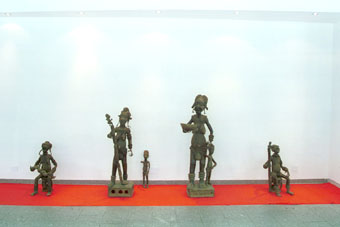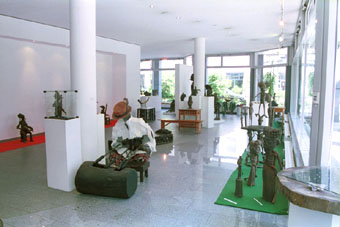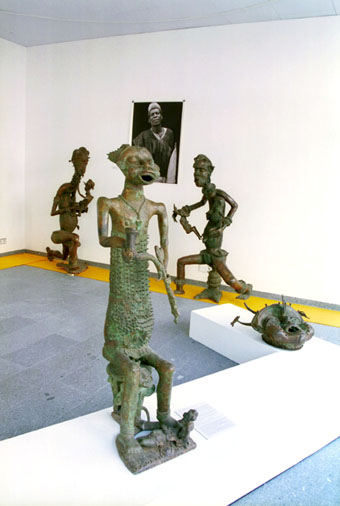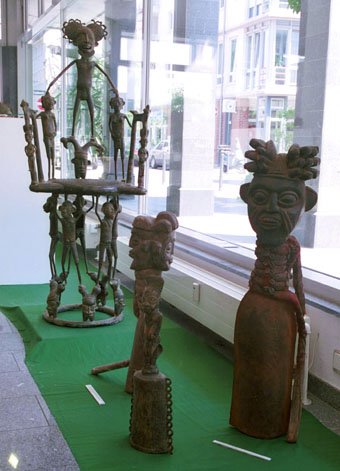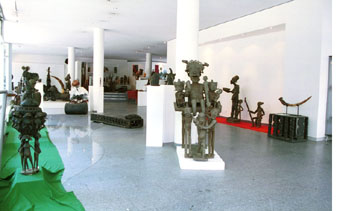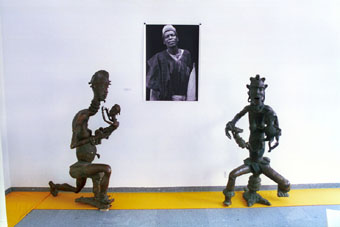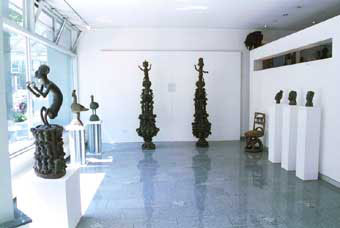 |
Background: Right: Left: |
Dynastic Pillars Sultan of Foumban's Palace. |
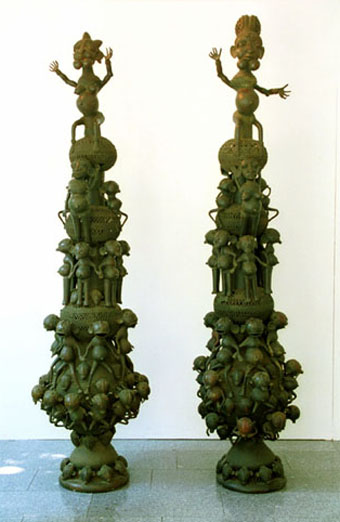 |
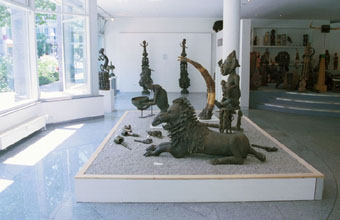 |
The platform displays a brass lion and a mother-child representation — both of which are excellent examples of modern casting techniques. A collection of pipes from the 1950s depicts an intriguing artistic form of expression. The female figure holding a bowl most likely stems from the 18th century. |
Foreground right:
A rare Brass Horn with decorative and symbolic ornamentation. Cameroon Grasslands, first half of the 20th century. |
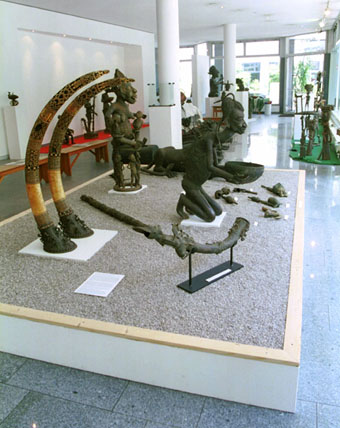 |
Group of Figures - The Raising of a King
This figural series portrays the raising of a king. The statues have particular art historical significance as they are the earliest known Tupuri bronzes from Chad. For the inland regions of Africa at this time, raw metal had a value comparable to that of gold in Europe. |
|
Left to Right: The King's mother holds a ceremonial staff (comparable to a sceptre) and the hand of the child King. |
|
Drummer by Sokari Douglas Camp. This sculpture was part of a worldwide touring exhibition titled Africa-Explores and was also on view at the Stuttgart airport within the framework of the major exhibition Vielfaches Echo. |
|
|
Foreground: Surreal Mythological Figure Cameroon. Bronze/Copper alloy. Based on stylistic details and patination, the date of this piece is estimated at ca. 1900. 132 cm. TL-Analysis
Backeground:
Right: Mask from a shrine |
A special themed grouping of bells A bell held by a loop and worn on the shoulder. Highly interesting execution with a wooden Janus Head mounted to the metal body of the bell with fabric. Iron and wood bell. The carved head depicts a noble with hat from the Cameroon Grasslands. Symbolic brass bell. This bell had a decorative vs. functional purpose and was found in the homes of wealthy merchants. Background: |
|
|
|
Left: |
| Center: Traveling King |
According to the catalog "The Art of Cameroon" by Nancy W. Edelmann, this brass figure represents the Tikar King Chigna, the grandfather of Diadou, King of Klems. The King, recognizable by his headpiece, is carried on a traditional litter by four male figures and accompanied by a bugler. A similar piece is described in the aforementioned catalogue with the note that the Bamum King Nsaangu (who reigned 1863-1889) preferred traveling by litter over traveling horseback. The brass piece shown, was cast circa 1980. A smaller reproduction was also available for the tourist market. |
Maternal figure with two children A portrait of a Cameroonian noble by Ralf Schmerberg complements the sculptures. Hommage à noir was the title of the portrait series which was exhibited at the New York gallery Pace-Wildenstein, as well as a parallel film project. |
|
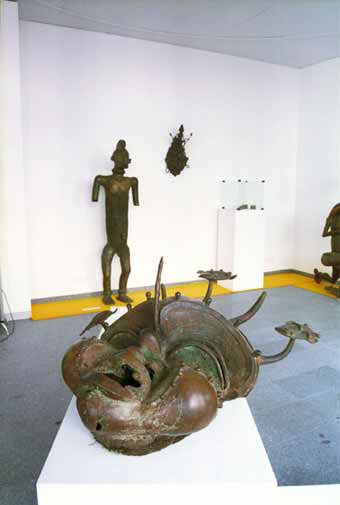 |
Background: A rare Kotopo figural sculpture from Nigeria measuring 195 cm high.
Background: Mask, Tikar. |
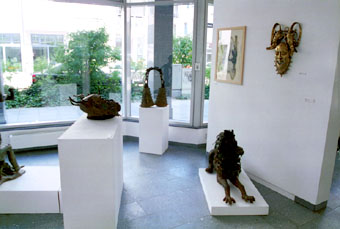 |
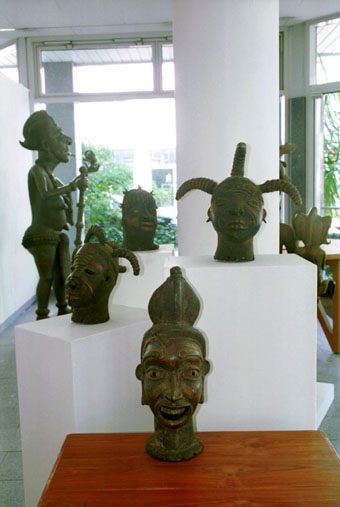 |
Foreground: Head 1, Head 2, Head 3, Head 4. |
Foreground: Old bronze weights from Ghana used for the weighing of gold dust. Each dealer had his own set of weights which were calibrated with special features. Figural representations were either mythological references or were simply castings of objects found in nature. Center: Warrior figure from the Cameroon Grasslands. Prestige object of a wealthy Cameroonian, circa 1975. |
Wood bench with bronze applications. This piece of furniture, with high sculptural value, is mounted with small bronze figures. Though it may strike those familiar with African art as being overstylized and ornate, the manufacturing date of circa 1980 marks it as stylistically typical for Cameroon. |
| To the Berlin exhibition July - September 2001 |
![]()

